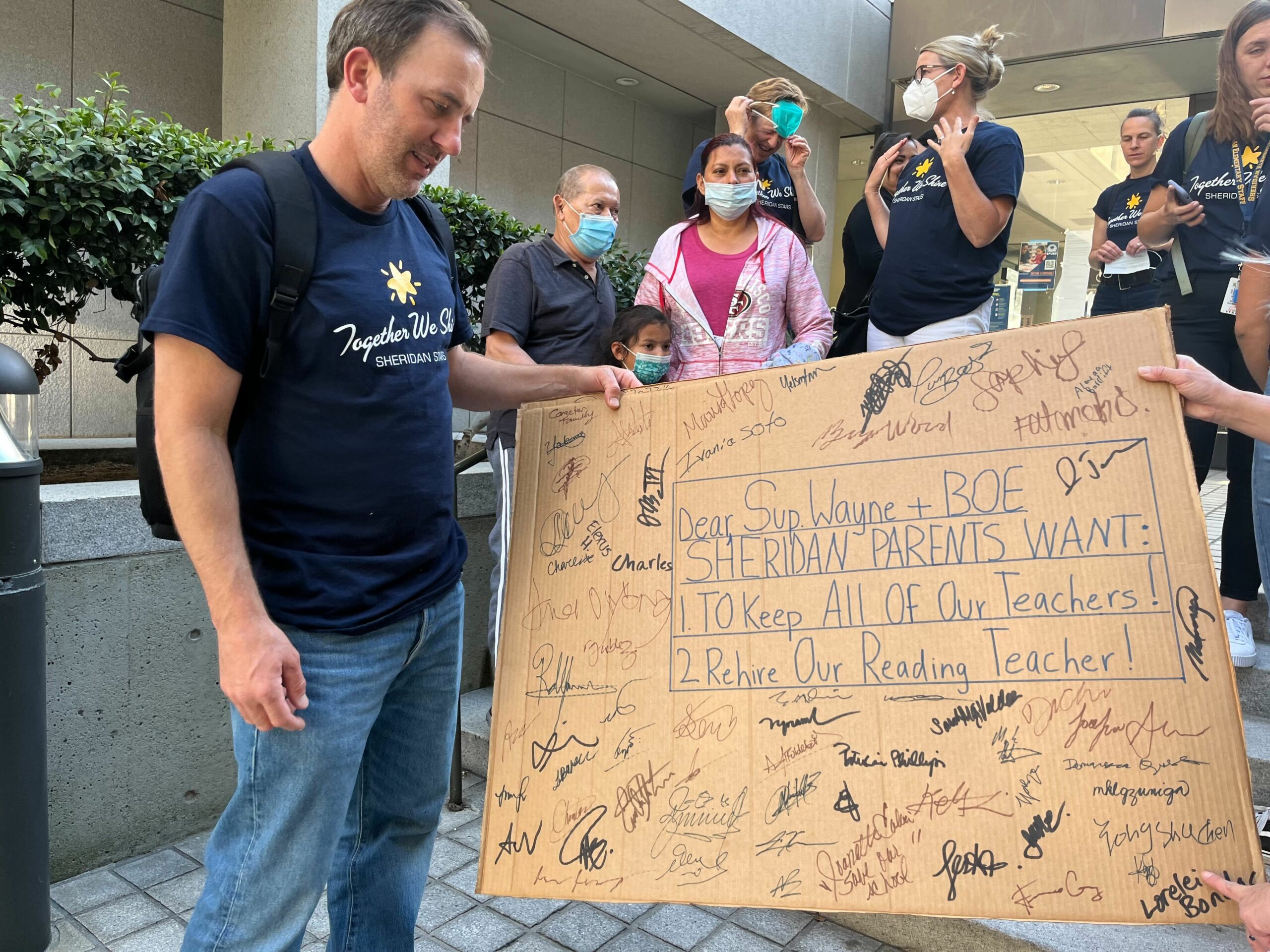Yanina Garcia credits a teacher at Sheridan Elementary School with getting her fourth-grader to a good level of literacy. Last year, he would show her books that the teacher—who specialized in reading intervention—sent home with him.
“He feels more confident with her there,” Garcia told The Standard in Spanish through an interpreter.
But the teacher quit after the San Francisco Unified School District reassigned them to a different campus with a vacant position right before the new school year began, according to multiple Sheridan staffers.
The sudden staffing change had an effect on Garcia’s son.
“He’s more distracted, he’s not as focused,” she said. “There’s a lot of kids not getting her support anymore.”
That risk of further instability for students has alarmed teachers and families—primarily at Sheridan, a small elementary school on the southern border of San Francisco.
A host of educators and concerned parents aired their concerns with The Standard, at Tuesday’s SFUSD Board of Education meeting and on social media.
Sheridan educators said that they learned late last week that on top of losing a reading intervention teacher, the school could see a second classroom consolidation this year—that is, the district could combine multiple classes to make up for a shortage of instructors.
That means Sheridan may have to turn two kindergarten and two first-grade classes into one kindergarten, one combined kindergarten and first-grade, and one first-grade class. And that consolidation could cause disruption at a critical stage for students developing foundational learning skills, according to first-grade Sheridan teacher Darcie Chan Blackburn.
Consolidation would be a big hit for a small school, many staffers say. And the proposal comes after students have already established relationships with their teachers, who have already conducted parent conferences and begun to get acquainted with kids’ families.
“The ripple effect is huge within our school,” said Kelly Grayber, who teaches a class that already combines fourth- and fifth-grades. “Any loss is not felt by just that class. A lot of our students already have uncertainty and unpredictability.”
Shortly before kicking off the new school year, SFUSD reassigned 97 certificated staff known as teachers on special assignment to plug classroom shortages, according to district spokesperson Laura Dudnick.
But the district still has vacant positions to fill, leading it to further consolidate positions after closing 166 teaching jobs—nullifying most of the 200-plus layoff notices— in May.
It’s unclear how many more classes the district may combine.
“While we recognize that this is challenging for schools and understand the potential disruption of moving students, we believe it is important that all students have qualified teachers,” Dudnick said in an email. “We have not yet made any decisions and we may make only a limited number of moves, or even none at all.”
The district has also proposed combining classes at McKinley and Garfield elementary schools, United Educators of San Francisco Vice President Frank Lara said. While some consolidation is typically expected, he said it may hit schools that haven’t had to deal with this kind of measure before.
“What we’re hearing from members is generally how disruptive it is for a community to find out that these changes are happening with so little communication,” Lara said. “It’s further disrupting at a time when educators feel the district has done such a disservice to have so many openings and they continue disrupting communities.”
The latest change brought Luz Garcia—no relation to Yanina Garcia— to speak at the school board for the first time. She said her son also benefited greatly from the reading interventionist who quit after being reassigned—and that the specialist helped with his special education needs as well.
“Any change stresses the kids out,” Garcia said in Spanish through an interpreter. “It’s a big deal.”
